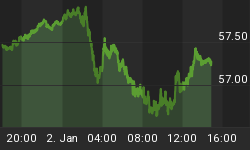The U.S. Dollar finished Friday's trading session higher in lack-luster trading. Last week several Forex markets posted closing price reversals. The GBP USD and EUR USD posted closing price reversal tops while the USD CAD and USD CHF formed closing price reversal bottoms.
All of these patterns followed through to confirm the reversals but did not have the accelerations like the patterns suggested. On the other hand, this pattern usually indicates a 2 - 3 week counter-trend trade so there is still time to make full corrections. Another sign that the correction will follow-through to completion is the fact that none of the closing price reversal tops or bottoms were negated.
There are several issues causing confusion among traders at this time. The main issues dictating the direction of the Dollar are interest rates and inflation. This week's auction drew higher yields which put down side pressure on the U.S. Dollar. Traders were driving the yields up because of the huge amount of Treasury supply hitting the market and over concerns the U.S. would not be able to finance its growing deficit.
Here is where the confusion comes in. At one time during the week, the Dollar actually rose on rumors the Fed would raise rates by the end of September. The thinking at that time was that higher yields would attract foreign buying. So what we saw this week was the Dollar falling because of higher yields and the Dollar rallying because of the threat of higher interest rates. This clearly indicates that investors are not certain which condition they prefer.
An announcement by Russia that it would cut its holdings of U.S. Treasury instruments triggered a flight-to-safety rally in the Dollar. This in a way was related to interest rates because less demand from Russia along with more supply from the Treasury would spike interest rates. By the end of the week, this event was hardly mentioned in the news. Based on the strength in the Dollar on Friday, however, it is possible that traders could be making an adjustment to reflect this action taking place in the future.
Higher crude oil prices had traders talking about inflation again. This news combined with additional debt issued by the Treasury raised trader confidence that inflation would surely show up at some time in the future. The gold market on the other hand did not reflect this scenario occurring at all. If selling pressure continues in the gold market next week, the U.S. Dollar is likely to surge. Depending on what the crude oil market does, the Dollar could have a spectacular week.
Euro and Canadian Dollar traders are facing other issues besides U.S. interest rates and inflation. The concern for investors regarding these two markets has to do with their rapid rise and its effect on exports. Both German and Canadian economies rely heavily on exporting goods and services to other countries.
Although it has not been specifically addressed by the European Central Bank and only in a statement by the Bank of Canada, the strong rise in these two markets could choke off demand for exports.
The strength in the USD CAD the past two days could be reflecting the fact that this may become an issue over the next few months if the Canadian Dollar is allowed to rally. A breakout to the upside through 1.1290 will change the Main Trend to up and would indicate the strong possibility of a rally to 1.1922.
The Euro Zone economy is in the same position as Canada. A break could be coming in the Euro because of the treat that a high price Euro could damage exports at a time when the economy needs growth to get out of the recession.
In summary, both technical and fundamental factors are indicating the Dollar could rally next week. Last week's closing price reversals and subsequent confirmations are indicating that the Dollar has room to rally. Weakness in the gold market and the lack of inflation should also help the Dollar. In addition, the highly priced Euro and Canadian Dollar could feel pressure if traders decide these two prices are trading at levels which could hurt German and Canadian exports. If these markets do not break on their own then look for the central banks attempt to talk these two markets lower.
















